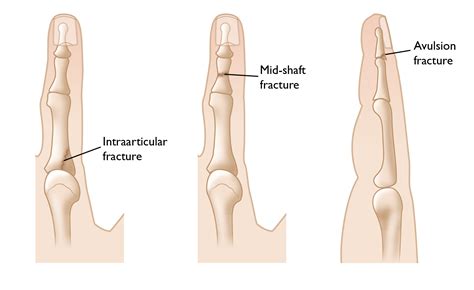How Long Does It Take a Broken Finger to Heal? A Comprehensive Guide
A broken finger, or finger fracture, is a common injury. Recovery time depends on several factors, and understanding the healing process is crucial for a successful outcome. This guide will explore the typical healing timeline, influencing factors, and what you can expect during recovery.
Understanding Finger Fractures
Before diving into healing times, let's briefly cover the types of finger fractures. They range from simple cracks (hairline fractures) to complex breaks involving multiple bone fragments. The severity of the fracture directly impacts the healing duration.
Types of Finger Fractures:
- Simple Fracture: A clean break in the bone.
- Comminuted Fracture: The bone shatters into multiple pieces.
- Open Fracture: The bone breaks through the skin. This increases the risk of infection.
- Stress Fracture: A tiny crack in the bone, often caused by repetitive stress.
How Long Does It Take to Heal?
The healing time for a broken finger varies significantly, but generally falls within these ranges:
- Simple Fractures: These usually heal within 4 to 6 weeks. With proper care and immobilization, you should see significant improvement within this timeframe.
- More Complex Fractures: Severe fractures, such as comminuted or displaced fractures, may take 6 to 8 weeks, or even longer, to heal completely. Surgical intervention may be necessary, extending the recovery period.
- Open Fractures: Due to the increased risk of infection, these fractures require more extensive treatment and have a longer healing time, potentially 8 to 12 weeks or more.
Factors Affecting Healing Time
Several factors can influence how long it takes for your broken finger to heal:
- Severity of the Fracture: As mentioned, more severe fractures require more time to heal.
- Age: Younger individuals tend to heal faster than older adults.
- Overall Health: Pre-existing medical conditions can impact the healing process.
- Proper Immobilization: Following your doctor's instructions and keeping your finger properly immobilized is crucial for optimal healing.
- Compliance with Treatment: Taking prescribed medications and attending follow-up appointments is essential for a successful recovery.
- Infection: Infection can significantly delay healing and may necessitate additional treatment.
What to Expect During Recovery
Recovery involves several stages:
Initial Treatment:
- Immobilization: This often involves splinting or casting to stabilize the broken bone and prevent further injury.
- Pain Management: Your doctor may prescribe pain medication to alleviate discomfort.
- Elevation: Keeping your hand elevated can help reduce swelling.
Post-Immobilization:
- Physical Therapy: Once the cast or splint is removed, physical therapy may be recommended to restore range of motion and strength.
- Gradual Use: You'll gradually be able to increase the use of your finger as it heals.
When to Seek Medical Attention
It's crucial to seek medical attention immediately if you suspect a broken finger. Signs of a broken finger include:
- Severe pain
- Swelling
- Deformity
- Bruising
- Inability to move the finger
- Numbness or tingling
Ignoring a broken finger can lead to long-term complications, such as stiffness, arthritis, or malunion (improper healing).
Conclusion
The healing time for a broken finger is variable, but with proper care and medical attention, most fractures heal successfully within a few weeks. Remember to follow your doctor's instructions carefully, attend all follow-up appointments, and be patient during the recovery process. If you experience any complications or unusual symptoms, contact your doctor immediately.
